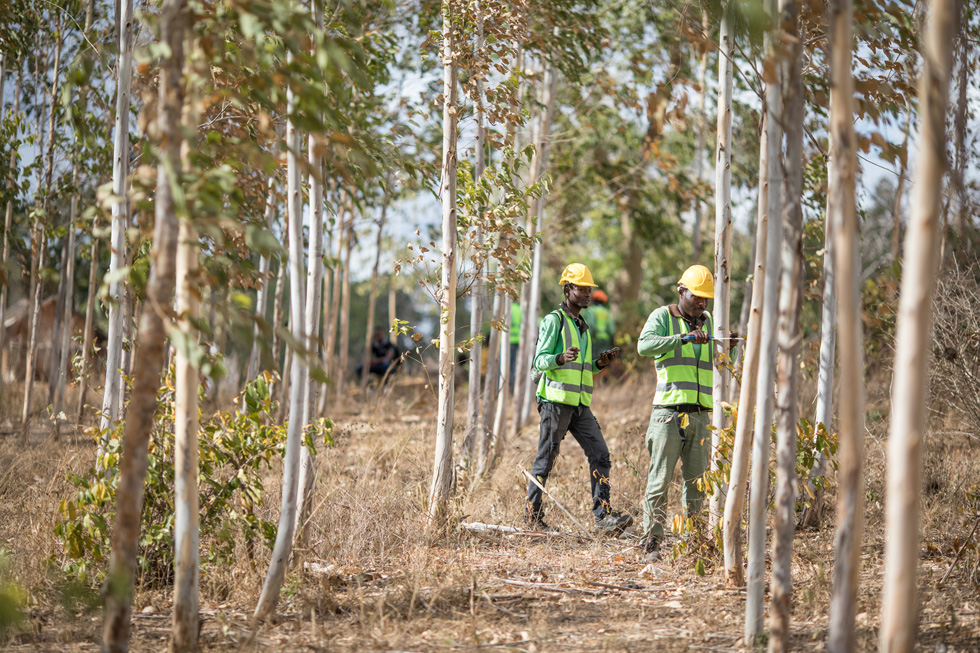Apple has launched its Restore Fund to make investments in forestry projects to remove carbon from the atmosphere while generating a financial return for investors.
Restore Fund, launched with Conservation International and Goldman Sachs, will remove at least 1 million metric tons of carbon dioxide annually from the atmosphere, equivalent to the amount of fuel used by over 200,000 passenger vehicles, while demonstrating a viable financial model that can help scale up investment in forest restoration.
According to Lisa Jackson, Apple’s vice president of Environment, Policy, and Social Initiatives, “Through creating a fund that generates both a financial return as well as real, and measurable carbon impacts, we aim to drive broader change in the future — encouraging investment in carbon removal around the globe. Our hope is that others share our goals and contribute their resources to support and protect critical ecosystems.”
Apple has partnered with Conservation International and Komaza, a sustainable “micro-forestry” company in Kenya, to support its positive impacts on carbon, biodiversity conservation, and socioeconomic development.
To ensure that the carbon stored in forests is being accurately quantified, and permanently locked out of the atmosphere, the Restore Fund will prioritize investments in working forests that improve biodiversity through the creation of buffer zones and natural set-asides.
The Restore Fund builds on Apple’s legacy of work in forestry conservation. For three years running, Apple has used 100 percent responsibly sourced fibers in its packaging and improved the management of more than 1 million acres of forests globally to date. Apple has also pioneered groundbreaking carbon projects with Conservation International that protect and restore grasslands, wetlands, and forests.
In 2018, Apple partnered with Conservation International as well as local government and conservation organizations in Colombia to protect and restore a 27,000-acre mangrove forest. In 2018, Apple partnered with Conservation International, local government, and conservation organizations in Colombia to protect and restore a 27,000-acre mangrove forest in the country. The aim is to sequester 1 million metric tons of carbon dioxide over the project’s lifetime. These mangroves not only protect the coasts and help support the livelihoods of residents in those communities where they grow, but they also store up to 10 times more carbon than forests on land.
Apple and Conservation International have also partnered with local conservation organizations in Kenya to restore degraded savannas in the Chyulu Hills region, an area between three national parks in Kenya and just across the border from Kilimanjaro National Park in Tanzania. Scaling up this work across the degraded rangeland and natural savannas across Africa could remove hundreds of millions of tons of carbon from the atmosphere each year, while also benefiting local communities and wildlife.
Apple’s customers can also take part in supporting these efforts. For each Apple Pay purchase from now through Earth Day, Apple will make a donation to Conservation International to support its efforts to preserve and protect the environment.
Since 2017, 100 percent of the virgin wood fiber used in Apple’s packaging has come from responsible sources — the same sort of responsibly managed working forests in which the Restore Fund intends to invest. This represents the company’s first closed-loop material as part of its goal to one day make products using only recycled or renewable materials.
Progress to this goal has involved steady innovations that have the potential to change the future of sustainable packaging. After launching the first iPhone with majority-fiber packaging in 2016, Apple’s newest iPhone 12 lineup now arrives to customers in packaging that comprises 93 percent fiber-based materials. This includes the fiber-based screen cover that protects the display and for the first time replaced the standard plastic film.




